The National Sculpture Museum in Valladolid is a significant institution for Spanish art. Located in Valladolid and known as a “museo estatal,” it is one of the 16 museums directly operated by the Ministry of Culture.
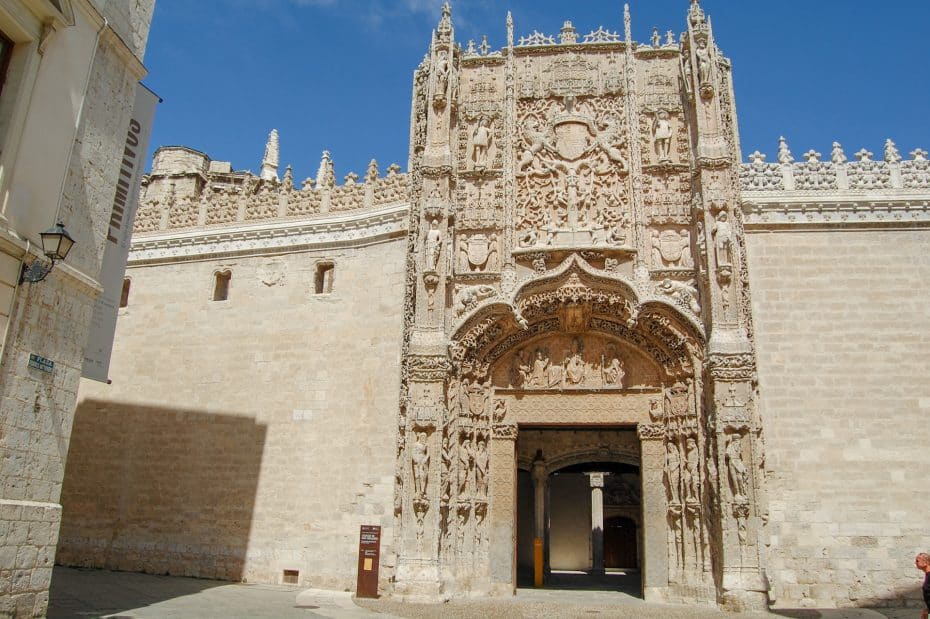
As expected, the museum is an important destination for art enthusiasts, particularly those interested in Spanish art from the Middle Ages to the 19th century, and one of the top attractions in Valladolid.
Its collections are spread across three distinct buildings. The main building, the College of San Gregorio (Calle Cadenas de San Gregorio 1), is an eye-catching example of Isabelline Gothic architecture. It features an impressive façade decorated with elaborate Gothic carvings. This building serves as the primary exhibition space for the medieval and Renaissance collections.
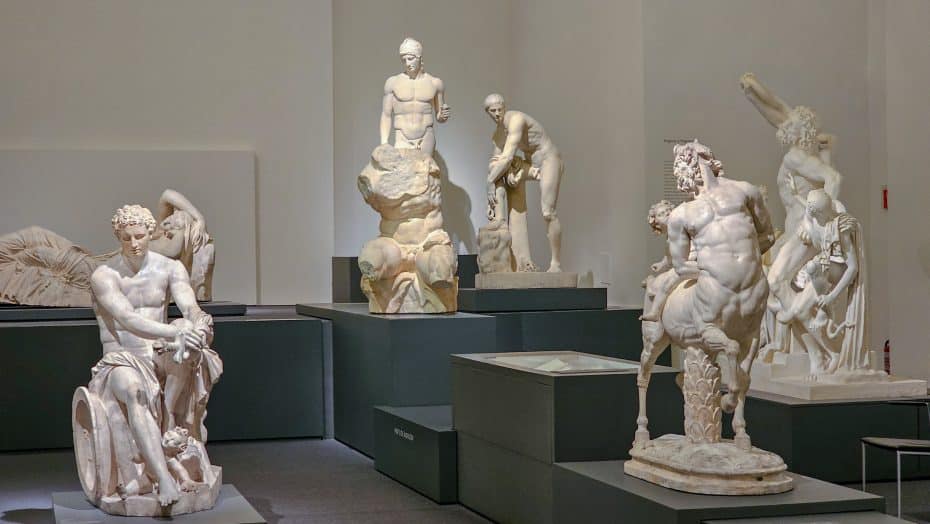
Across the street, Palacio de Villena (Calle Cadenas de San Gregorio 2) showcases temporary exhibits. Meanwhile, La Casa del Sol (Palacio del Conde de Gondomar) is where you’ll find an impressive collection of plaster and marble copies of classical works of art.
College of San Gregorio: A Masterpiece in and on Itself
The College of San Gregorio was founded in 1488 by Friar Alonso de Burgos, a confessor to the Catholic Monarchs. Its primary purpose was to educate Dominican theologians and future leaders of the Church.
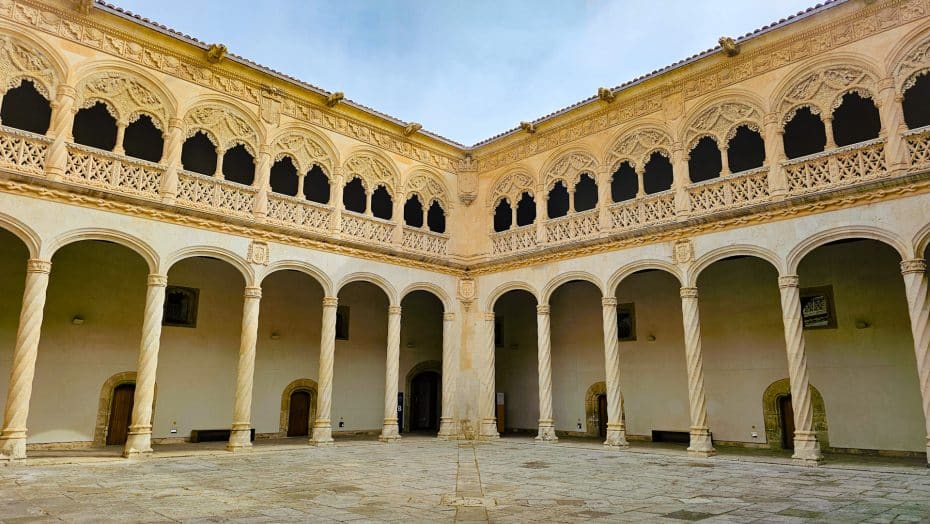
The architecture is characterized by its late Gothic style, often called Isabelline Gothic or Plateresque. Constructed between 1488 and 1496, the building showcases intricate detail in its ornamental design. The facade features an elaborate decoration that includes medallions, coats of arms, and various symbolic figures. Carved stone details cover almost every inch of the front entrance, making it an impressive sight on arrival.
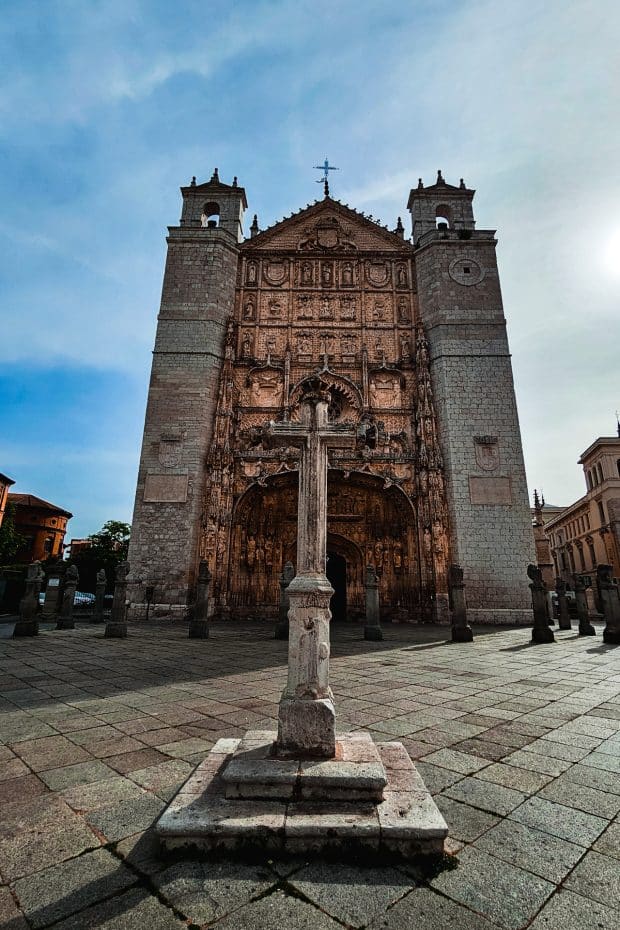
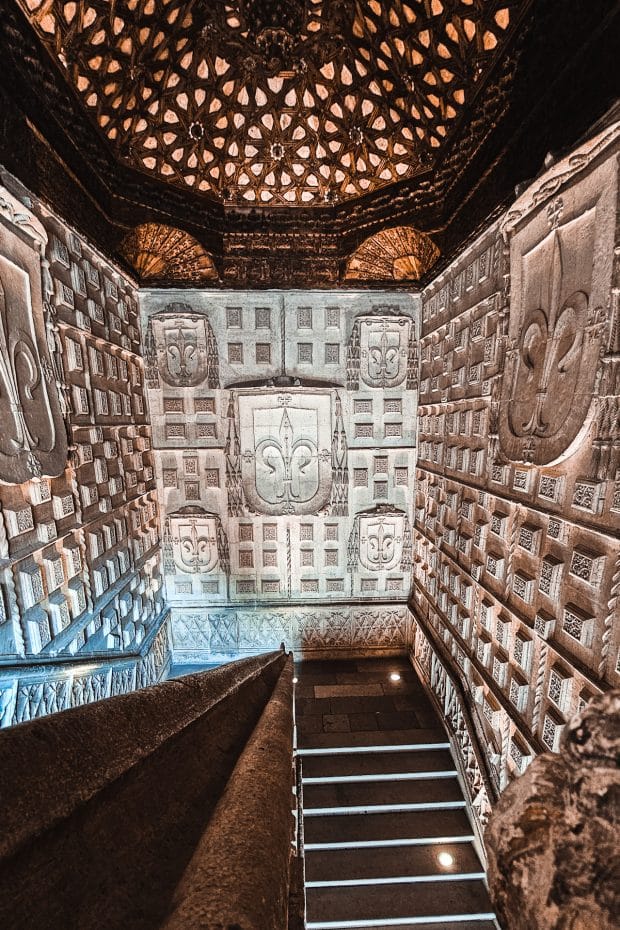
Walking through the grand entrance, you cannot help but notice the detailed ceiling adorned with carved wooden panels. The courtyard offers yet another example of delicate craftsmanship. Its galleries are supported by slender columns with decorated capitals, projecting an air of elegance and historical grandeur.
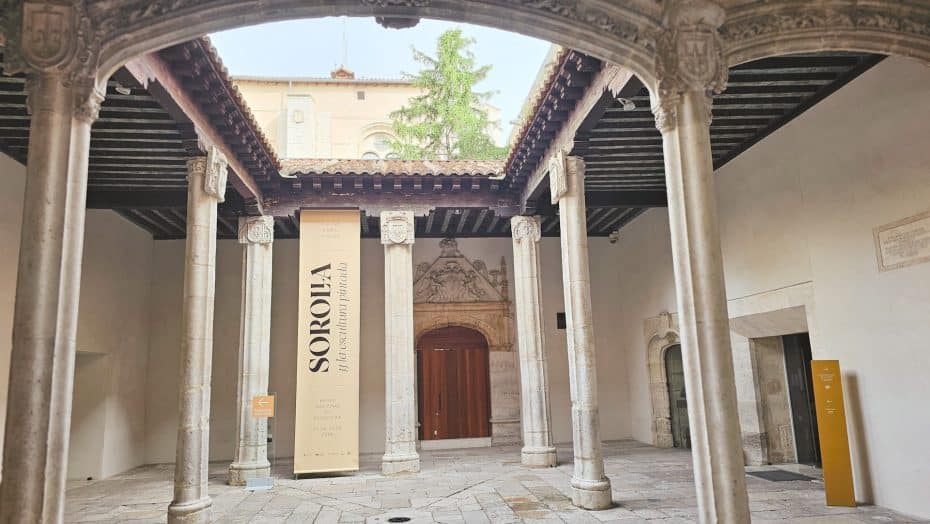
Beyond its architectural features, the College stands out for various aspects that contribute to its unique status. Besides housing the National Sculpture Museum since 1933, it has managed to maintain much of its historical essence while adapting to modern-day needs. The rooms that once hosted scholarly debates now serve as galleries displaying a rich collection of sculptures spanning several centuries.
More about Valladolid
National Sculpture Museum: The Collection
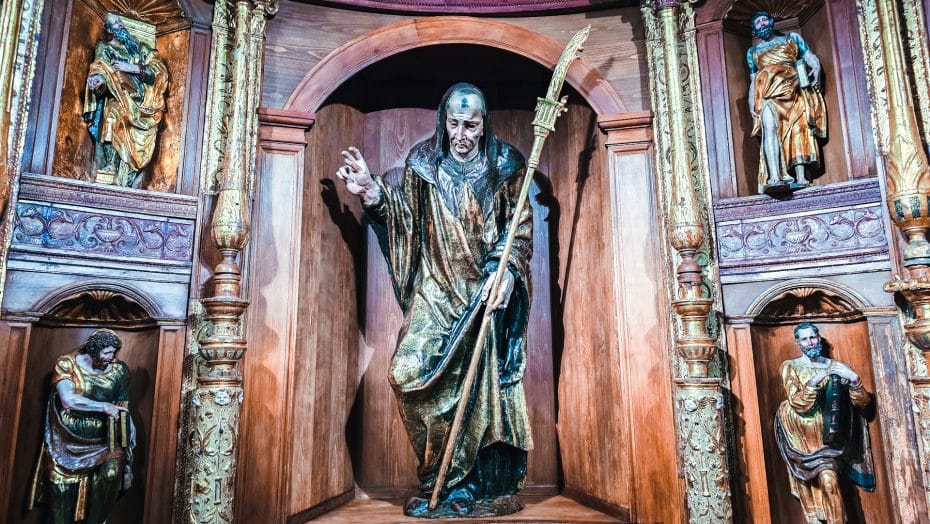
The National Sculpture Museum mainly exhibits works dating from the Middle Ages to the 19th century. It showcases prominent artists such as Juan de Juni, Alonso Berruguete, and Gregorio Fernández. Furthermore, it houses remarkable polychrome wood sculptures.
Collection Origins
The collections at the National Sculpture Museum in Valladolid are deeply tied to the political and social reforms of the 19th century. The museum’s foundation is closely related to the process known as Desamortización, a series of legislative acts initiated by the Spanish government to confiscate properties owned by the Catholic Church and religious orders.
Desamortización began under the rule of Charles IV in 1798 but gained significant momentum during the Liberal Triennium (1820–1823) and more extensively under the governments of Juan Álvarez Mendizábal (1836) and Pascual Madoz (1855). The primary aim of these acts was to reduce public debt by auctioning these properties.
As a result, many monasteries, convents, and other religious establishments were abandoned or repurposed during this period. This resulted in a significant redistribution of art and artifacts that had previously been housed within these religious institutions for centuries. Religious artworks, sculptures, altarpieces, and various items of ecclesiastical heritage faced potential damage or dispersion due to a lack of proper care or deliberate neglect.
As a remedial action, the government decided to gather and safeguard many of these scattered artworks in state-owned repositories. Consequently, this led to the establishment of central collections that eventually evolved into museums.
The National Sculpture Museum initially collected pieces from dissolved monasteries around Valladolid and neighboring provinces. Over time, it expanded its collection through acquisitions, donations, and deposits.
Sculpture Museum in Valladolid: Highlights
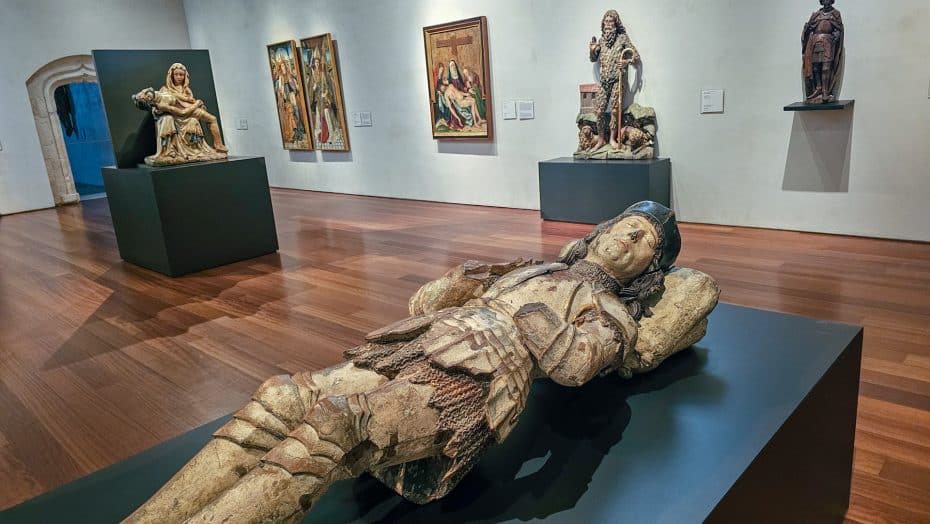
The National Sculpture Museum in Valladolid is home to some of Spain’s most impressive works of art. Here are ten masterpieces you simply can’t miss:
1. Saint Michael Vanquishing the Devil by Pedro de Mena (1664)
This Baroque sculpture shows Saint Michael as a triumphant figure standing over the devil. Made from wooden polychrome, it’s notable for its powerful expression and intricate detailing, representing the eternal struggle between good and evil.
2. Penitent Magdalene by Pedro de Mena (1664)
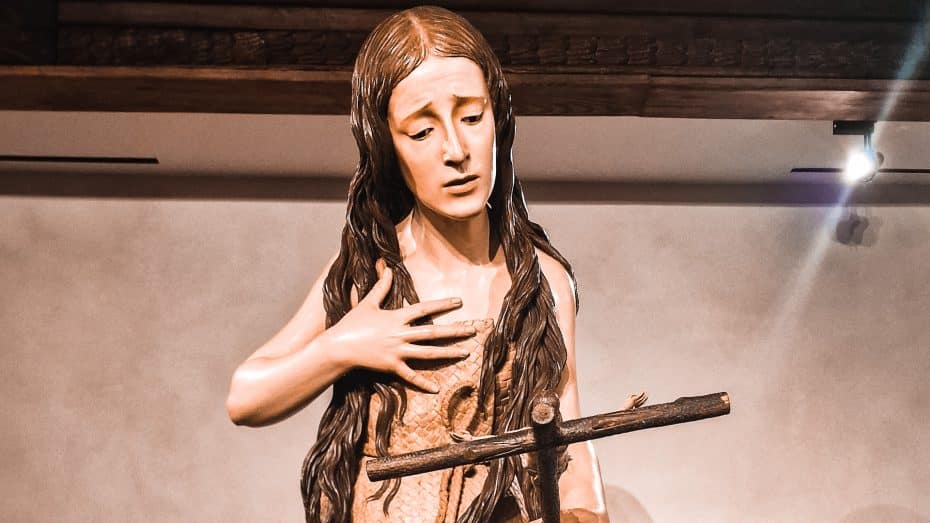
This wooden sculpture captures Mary Magdalene in a moment of deep religious reflection and sorrow. The lifelike texture of her hair and garments, along with the tearful expression on her face, evoke deep empathy.
3. Santa Eulalia Crucified
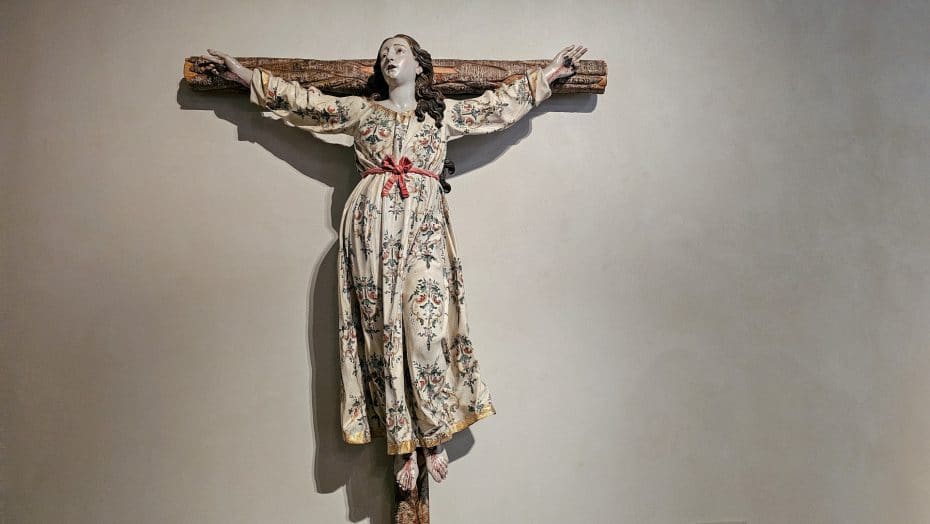
Luis Salvador Carmona, known for his detailed and emotive style, created the sculpture of Santa Eulalia crucified in 1763. The piece represents Santa Eulalia’s suffering and martyrdom and captures the Baroque era’s characteristic emotional intensity.
4. Altarpiece of San Benito el Real (1526-1532)
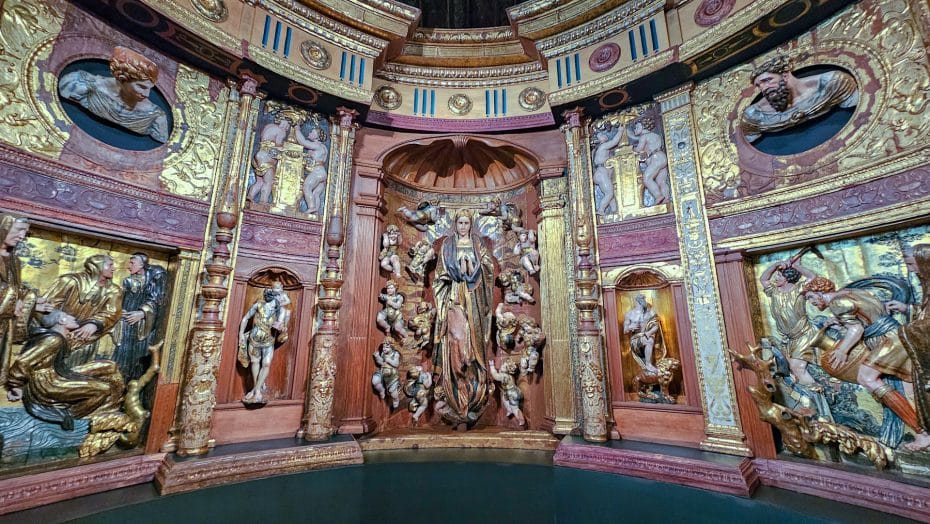
Crafted by Alonso Berruguete, this altarpiece is a stunning example of Renaissance art in Spain. It depicts numerous biblical scenes with remarkable dynamism and emotional intensity, a trademark of Berruguete’s work.
5. Statue of Saint Gregory (early 17th century) by Juan de Juni
Known for expressive realism, Juan de Juni’s depiction of Saint Gregory with an open book symbolizes wisdom and scholarship. The statue’s detailed hands and face deeply resonate with contemplative spirituality.
6. Pietà by Gregorio Fernández (1616-1619)
This moving portrayal of the Virgin Mary cradling the dead body of Christ is one of Fernández’s pivotal works. The sorrowful yet serene expression on Mary’s face, coupled with Christ’s lifeless body, conveys a sense of profound grief and loss.
7. Virgin of Sorrows by Juan de Juni (16th Century)
This sculpture was made by the artist Juan de Juni in the 16th century. The sculpture portrays Mary in a moment of deep anguish, holding her hands together and looking upward as if seeking solace from divine intervention. It’s considered an important work because it captures raw human emotion in a way that’s deeply moving. A curious fact is that Juni was known for his ability to convey religious themes with intense emotional expressions.
8. Saint Bruno by Manuel Pereira (1652)
Manuel Pereira created the statue of Saint Bruno in 1652, exemplifying the Baroque style. Saint Bruno is depicted in a contemplative pose, holding a skull in his hand, symbolizing mortality and penance. This piece is notable for its highly detailed craft and realistic representation of textures, particularly in the robes. The statue shows Saint Bruno at a moment of reflection, reminding viewers of life’s transient nature.
9. San Sebastián by Alonso Berruguete (1526-1532)
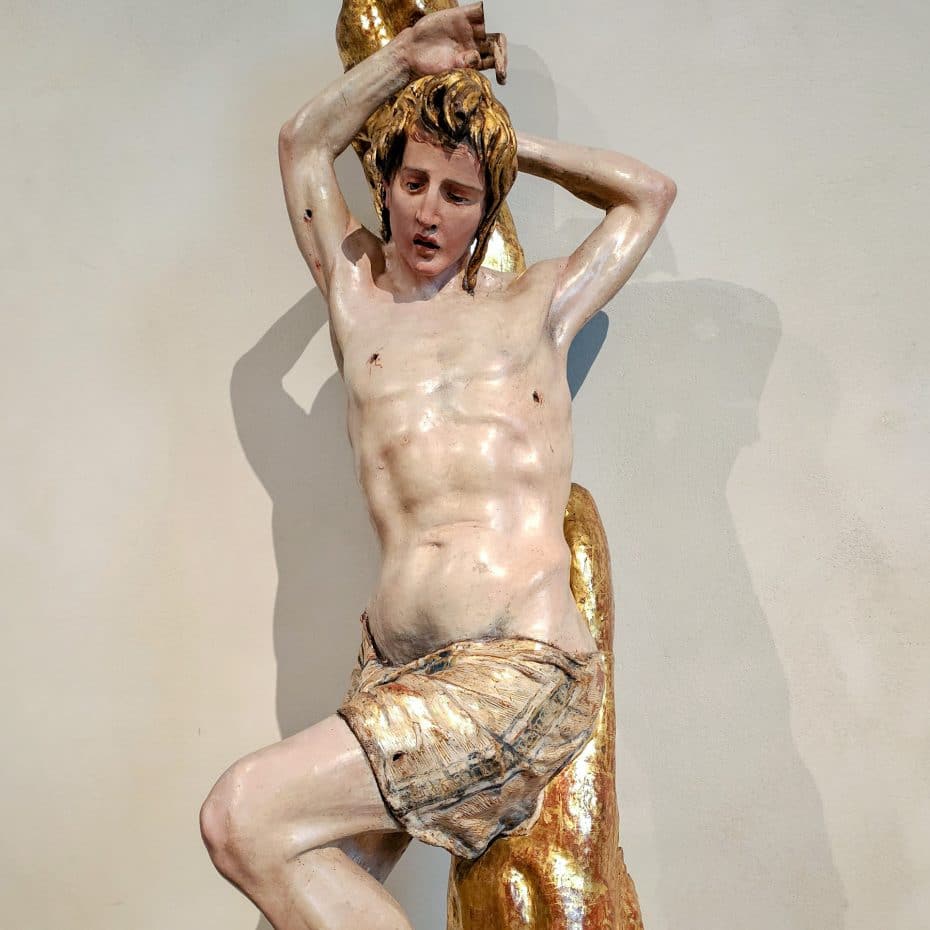
Sculpted by Alonso Berruguete between 1526 and 1532, this Rennaissance work originated from Spain. It depicts St. Sebastian tied to a tree, pierced with arrows but displaying an expression of calm acceptance of his martyrdom. Known for its dynamic composition and emotional intensity, it played a significant role in establishing Berruguete’s reputation as a master sculptor.
10. Cabeza de San Pablo by Juan Alonso Villabrille y Ron
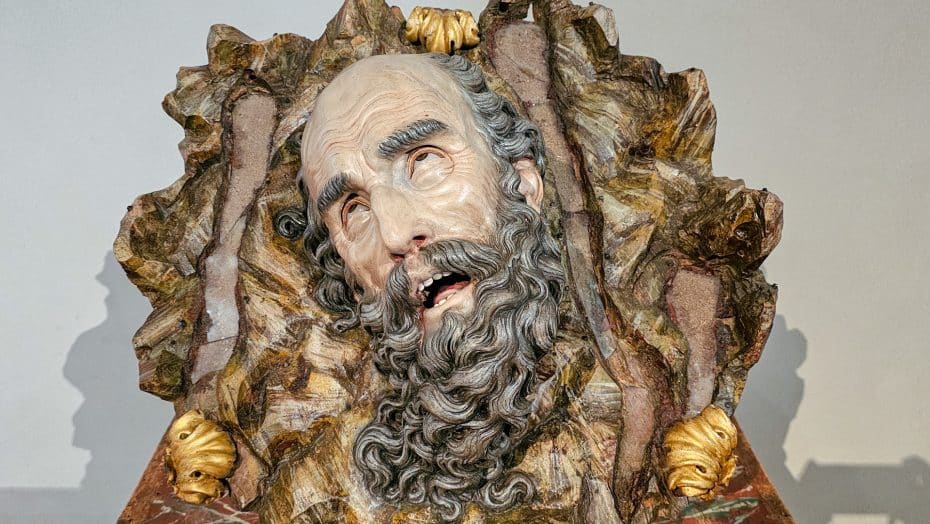
Juan Alonso Villabrille y Ron, a notable Spanish sculptor of the Baroque era, is famous for his intricate and expressive works. His piece, “Cabeza de San Pablo,” exemplifies his mastery in capturing intense religious fervor and emotion through detailed facial expressions. Created in the late 17th or early 18th century, this sculpture reflects the dramatic style characteristic of Baroque art, emphasizing movement, tension, and dramatic use of light and shadow.
The Palace of Villena
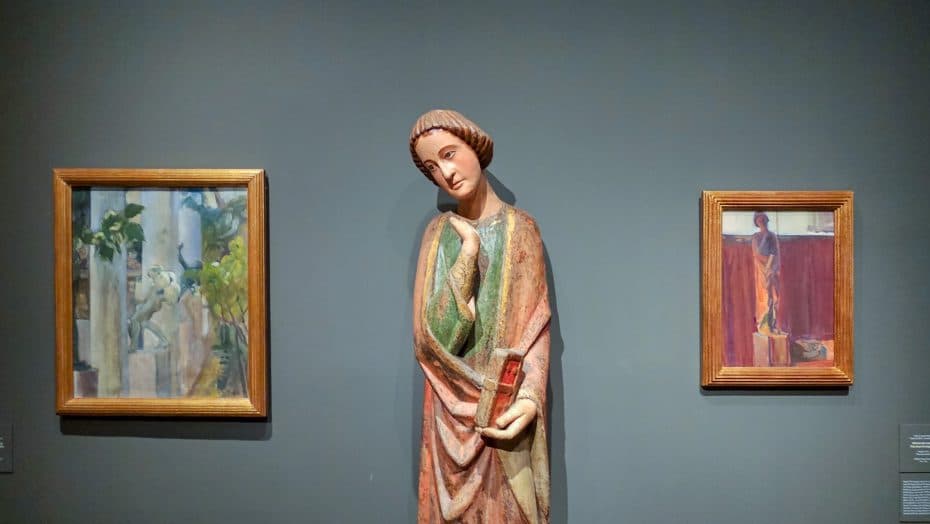
The Palace of Villena is known for its temporary exhibitions. During my visit, there was an exhibition about the Valencian artist Joaquín Sorolla. His paintings on display included sculpture-inspired paintings and serene garden scenes from his Madrid residence. Sorolla’s brushwork and colors brought these scenes to life in a truly mesmerizing way.
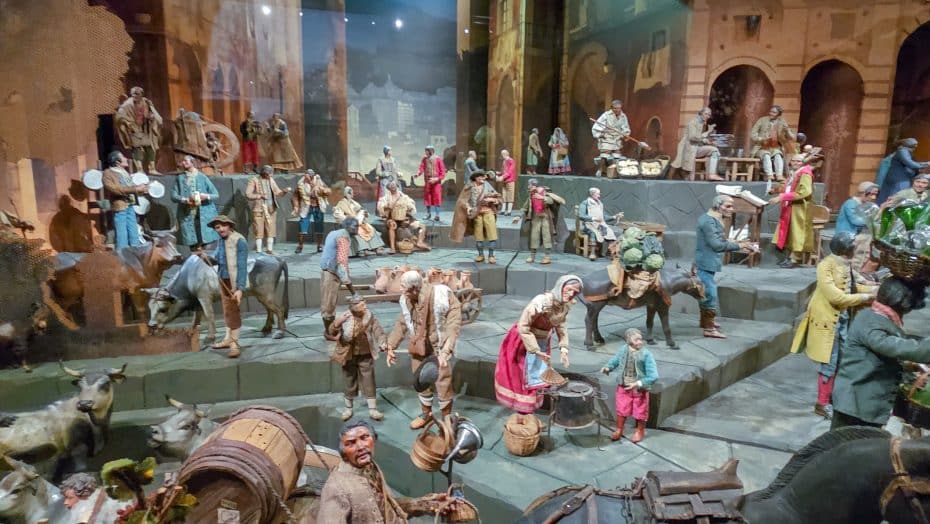
Another noteworthy exhibition featured the artistry of Neapolitan Nativity Scenes. The craftsmanship involved in creating these detailed scenes was incredible. Figures crafted from terracotta, elegantly dressed in miniature garments, depicted various scenes from traditional Nativity stories. The attention to detail in these displays was astounding, from the expressions on the figures’ faces to the intricate textures of their clothing.
Casa del Sol (Palacio del Conde de Gondomar)
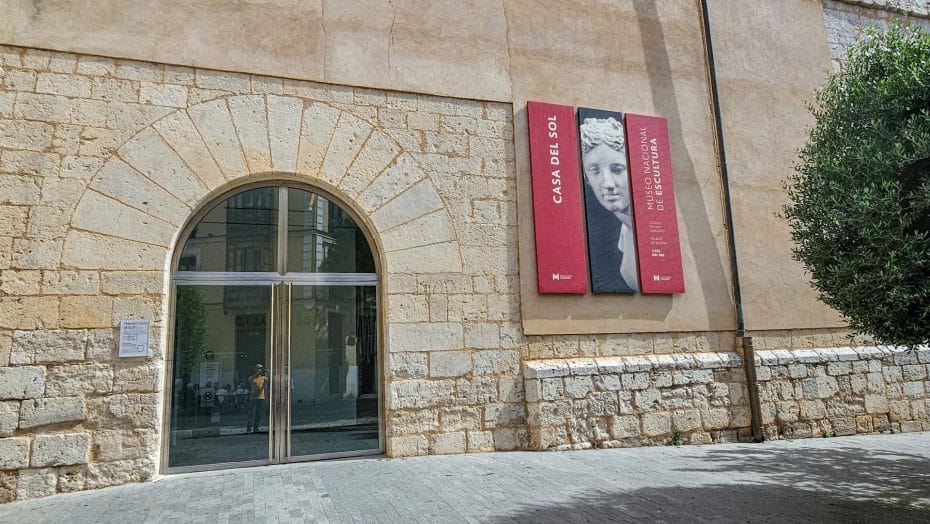
The National Sculpture Museum in Valladolid houses part of its collection in the Casa del Sol, also known as the Palacio del Conde de Gondomar. This collection includes classical art copies made from both cast and marble. Some notable examples include replicas of renowned sculptures such as the Dying Gaul, Apollo Belvedere, and the Laocoön Group.
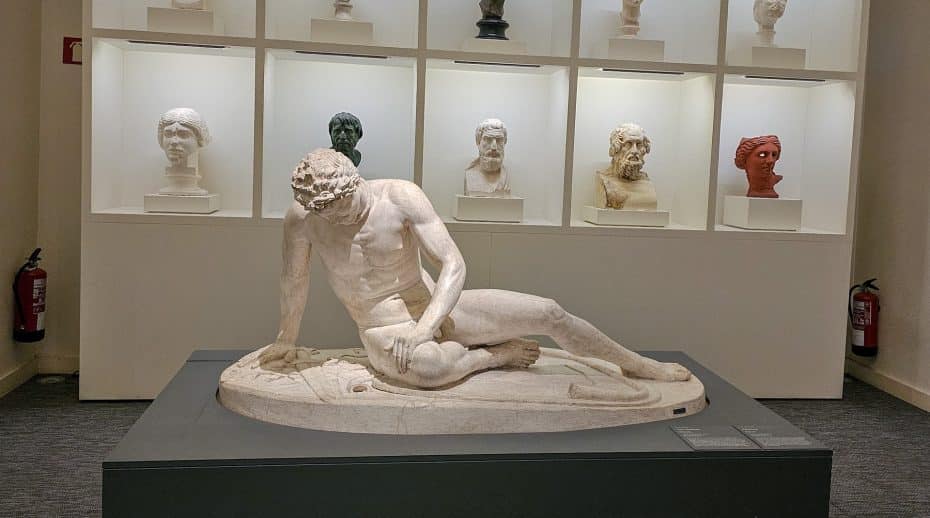
While not as impressive as seeing the famous originals, the intimate space offers an up-close look at these masterpieces.
MNE Valladolid: Useful Information for Your Visit
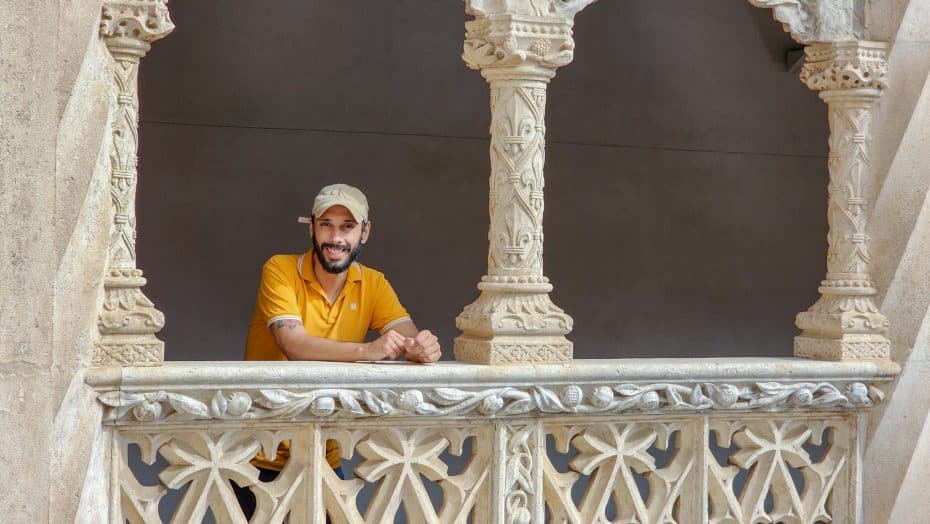
The National Sculpture Museum in Valladolid has a wonderful collection of religious art from the Middle Ages to the Baroque period. Although religious art is not my favorite, I appreciated the impressively detailed sculptures and skills. The museum is inside a former Reinassance-era college, which adds an interesting atmosphere. Here are some tips for your visit to this National Museum:
- Location: The National Sculpture Museum in Valladolid is at Calle Cadenas de San Gregorio, 1, 47011 Valladolid, Spain.
- Opening times: The museum is open Tuesday through Saturday from 10:00 AM to 2:00 PM and 4:00 PM to 7:30 PM and on Sundays and holidays from 10:00 AM to 2:00 PM. It remains closed on Mondays.
- Prices: The entry fee is generally around €3, with possible reductions for groups, students, and +65s. There is free entry on Saturdays from 4:00 PM to 7:30 PM and Sundays.
- Collection: Set in a complex of three historical buildings, including the College of San Gregorio, Casa del Sol, and the Palace of Villena, all within walking distance. The museum complex showcases an exceptional collection of Spanish sculptures from medieval times to the 19th century.
- Duration of the visit: To fully appreciate the extensive collections, it is advisable to allocate at least two hours for your visit.
- Getting there: The museum is easily accessible by public transport. Bus numbers 1, 6, or 10 stop near the museum. If you’re on a day trip from Madrid or Castile, Valladolid Campo Grande station is a 20-minute walk or a short taxi ride away.
- Phone number: +34 983 250 375.
- Websites: Museo Nacional de Escultura de Valladolid | Visit Valladolid Official Tourism Website.
More about Central Spain



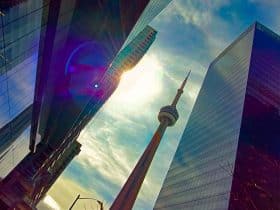
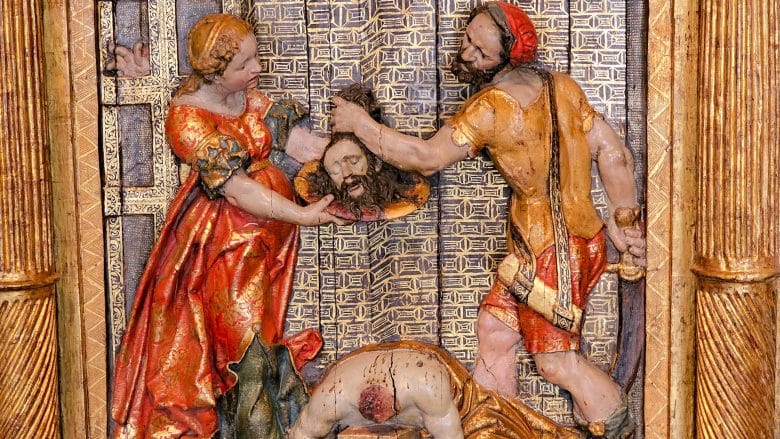



















Leave a Reply
View Comments